Understanding humans around the globe is the essence of what we do here at intO. And our global team – composed of over 65 researchers who live and work in 50 different countries – is structured this way because we know that behaviours and attitudes can’t be reliably analysed without a full understanding of their context. Markets, societies, systems and individuals all think, plan, act and spend differently according to contextual influences. So the challenge for innovators, designers, marketeers – or any creative decision maker – is to recognise the limitations of their own experience, navigate the contexts that influence their audiences, and explore alternative perspectives that stretch their ambitions. After all, you can’t make the most of opportunities that you aren’t even aware of.
From lo-fi sprinkles of newness to high-stakes future scenarios
Our clients commission research for inspiration when they need to shape or create their work in new ways. Satisfying a business need for inspiration can range from delivering a quick dose of fresh thinking for a pitch, to piecing together future scenarios for a high-investment innovation initiative. In every instance, it’s our role to navigate contextual shifts – monitoring what’s happening around a point of focus and sharing its relevance to a given organisation, function, product or service. Our ultimate objective when we INSPIRE is to present clear and relevant possibilities that justify further exploration.
The importance of a perspective that’s up-close and worldwide
Studio intO’s biggest strength is our far-reaching access into different markets and cultures. This gives us both a panoramic, worldwide perspective, made up of a multitude of local, up-close views of contextual shifts. In our increasingly globalised world, this access is valuable because different cultures, and the momentum of global trends and discourses, are always rubbing up against one another and evolving into new behaviours and attitudes (for more on this, please listen to our founder, Joanna Brasset’s TEDxUAL talk, Cultural Friction & Global Momentum).
Four contextual shifts that can also be seen as ‘flavours of inspiration’
In this article, we’re going to explore the four kinds of contextual shifts that we typically mine for fresh inspiration:
- Cultural shifts (inspiration from new markets)
- Category shifts (inspiration from new competition)
- Consumer shifts (inspiration from new audiences)
- Trend shifts (inspiration from new priorities)
CULTURAL SHIFTS: Influencing by being influenced
Globalisation means that daily rituals can spread to other countries and can be translated in different ways. With this transference, cultural ideas and beliefs are exchanged along with goods, services and resources – and as a result, the signifiers of universal habits and occasions around the world are constantly shifting.
Let’s look at the example of American fast-food brand, Kentucky Fried Chicken (KFC). In the USA, KFC chiefly markets its restaurants and food to mid and low-income families. However, in Japan, the consumer relationship with KFC is really fascinating. As a country that is familiar with the Christian celebration of Christmas but doesn’t have an official holiday of its own, KFC has marketed itself to become the traditional Christmas dinner for families (read more about the history here) and about 3.6 million orders at this time of year account for up to a third of the chain’s annual sales. KFC took a cultural norm from the West and inserted it as an annual tradition in Japanese culture.
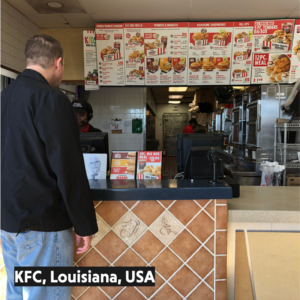
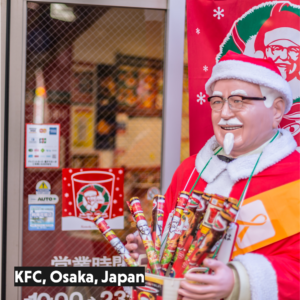
And by the way, if you’re keen to further explore random KFC trivia, read this article to understand how an immersive trip to China inspired the CMO of footwear brand, Crocs, to launch 2020’s limited-edition, fried-chicken-scented, KFC foam clogs – (which sold out in under half an hour when they launched in the USA).
How do we explore cultural shifts? By examining variations on a theme
When thinking about investigating cultural shifts, many people think of cultural immersion as flying to far-flung destinations and experiencing new cultures first-hand – but that’s not always practical, which is where we come in. If your theme is ‘breakfast’ and you need to quickly see, hear and understand breakfast rituals in 20 countries, then a physical cultural immersion might take a few months and a considerable budget. Whereas intO’s global network could gather, design and deliver a multimedia breakfast-themed presentation in a matter of weeks.
Learn more about our explorations of cultural shifts for Uber (mobile ethnography) and Pernod Ricard (curated conversations), in this article.
Avoiding the pitfalls of appropriation
It’s worth saying here that gaining inspiration from cultural shifts is not the same as appropriating culture by imitating signifiers from elsewhere. On the contrary, deep and detailed cultural insights will actively avoid this faux pas by revealing potential sensitivities and avoiding harmful blunders.
CATEGORY SHIFTS: Your true competitors may surprise you
No matter how saturated a market is, there will always be progressive users hacking new solutions or workarounds to meet their own evolving needs. These solutions are often not immediately identifiable as ‘competitors’ but are perhaps even more important to track than those businesses, brands and products that are trading similar offers to similar audiences. For example, if you’re a shampoo brand, you should have a constant eye on users around the world whose hair maintenance doesn’t include the use of formulated and packaged shampoo. Why? Because they still know something that you don’t about how to freshen and condition human scalps and hair. Even if their needs are too niche to represent a new target audience, their habits and tools are a source of wisdom that’s worth tapping into.
For a more detailed example, the popular, hands-free baby slings that are winning design awards now – and are modified versions of the traditional Chinese mei tai – only launched in the West in the early 2000s, but soft wraps that hold a baby securely to a carer’s body have been used in Africa and Asia for centuries. As the need to balance parenting with busy, urban lives increases, hands-free mobility solutions may become the primary investment for parents over traditional prams and buggies that need to be pushed and steered – and that signifies a huge shift for brands in the category (particularly if they don’t have a hands-free product in their portfolio).
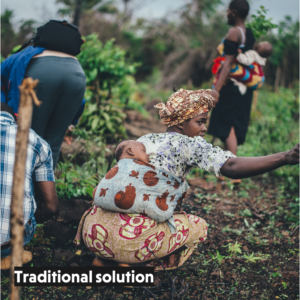

How do we explore category shifts? By viewing present workarounds as potential future solutions
Gaining insights into category shifts requires up-close interaction and observation with both existing and potential future users. Ethnographic research is an important tool here, because it can uncover needs that participants do not consider to be ‘unmet’ – revealing extraordinary workarounds that feel very routine and ordinary to them. Ultimately, exploring category shifts involves looking beyond markets and audiences that are currently served. Many companies devote too much of the budget to understanding current trends and markets, and too little on trying to forecast future shifts and adjacencies.
Learn more about our explorations of category shifts for Dorel Juvenile’s Maxi-Cosi brand (mobile ethnography), and Merlin Entertainments Sea Life brand (curated conversations) in this article.
Switching your mindset from ‘threat’ to ‘opportunity’
Surprising competition can inspire brands and businesses to innovate in ways that are equally surprising. Asking ‘Where CAN we compete?’, rather than ‘Where DO we compete?’ will naturally generate new answers. For example, Reckitt Benckiser’s Dettol is a household disinfectant in the UK, but began its expansion into personal care products in the Middle East. Dyson began with vacuum cleaners and is now competing with huge success in the premium electric hair styling category; few brand specialists in the premium beauty category would have believed that this was possible before it happened! Clever category shifts are not about losing focus. Rather, intelligent insights can inspire adaptations to existing offerings that stretch categories and better meet – and can even pre-empt – the needs of the end user.
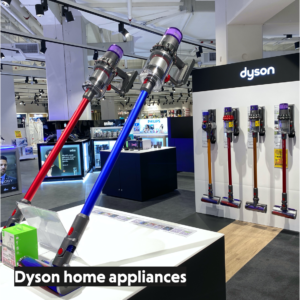
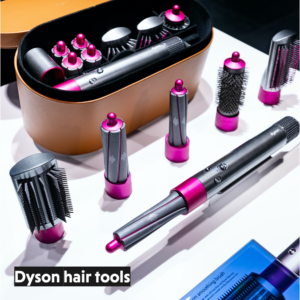
CONSUMER SHIFTS: Loyalty is a slippery thing
Many business leaders define their customer context and use cases early on, then freeze their lens, tracking the same set of behaviours and assuming they will remain important.
But a brand’s full spectrum of followers is often surprising and shifts can occur out of nowhere. Who loves you now? What might influence the amount of love they have for you tomorrow and who might your future supporters be? It’s dangerous to fall prey to the belief that carefully constructed marketing plans keep audiences in sight and within our control, because reality rarely works like that. Brands and businesses need to have one ear to the ground and one eye on the future, to stay relevant over time and capitalise on emerging opportunities.
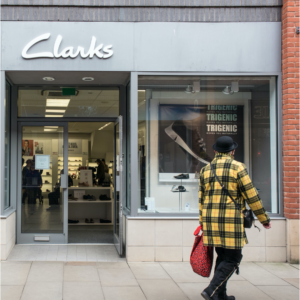
Initially a ‘sensible’ UK brand associated with comfort, Clarks shoes were unexpectedly embraced by Jamaican subculture in the 1960s, which then influenced musical subcultures including ska, northern soul, 90’s rave and Britpop back in the UK, which then went on to influence an enduringly loyal audience for Clarks in Japan. Read more HERE.
Retaining, replacing and increasing
Many businesses and brands around the world are discovering that their core customer profiles have shifted considerably since the pandemic. For example, older audiences have adapted to shopping for groceries online and millennials (in the UK) spent twice as much on their gardens during lockdown as the rest of the population, with 74% of people citing that they changed the way they used their outdoor spaces, often adding new features like BBQs and children’s play equipment. The disruption to global supply chains, coinciding with a rush on products from particular categories, means that consumers are still having to hunt to avoid ‘out of stocks’ and are buying from retail brands they weren’t aware of previously. The smartest of these retail brands are investing in ways to retain these customers, and attract more like them – without alienating their established, pre-pandemic customer base.
How do we explore consumer shifts? By distilling a core benefit then mapping its appeal
A typical innovation cycle begins with a user context, then develops a solution with key benefits that serve that context perfectly. So, when we want to uncover new consumer contexts, we simply reverse this approach – taking a key benefit and scanning multiple horizons to uncover new contexts and users where this benefit could be relevant.
It seems obvious to say, but the starting point for exploring consumer shifts – particularly when related to products and services – should always be with users (and not with shareholders, investors, supply chains, the competitive landscape or even the company mission). Access to authenticity is critical here; whether we speak to people via interviews, surveys, diaries or social media listening – the research must be anchored in the real lives of the real people who will carry your solution into the future with them.
Learn more about our explorations of consumer shifts for Skyscanner (cultural safari and curated conversations) in this article.
TREND SHIFTS: When life layers blur, new patterns emerge
There are always long-term, slow-moving macro trends developing, which influence societies and human behaviours worldwide. Climate change, technological advancement and increased connectivity are top-of-mind examples. However, inside these macro trends, are convergent events that are relevant to business interests, in regional markets and more importantly, in the lives of prospective customers.
The six layers of everyday life
At intO, we work from the perspective of real people living real everyday lives, in order to help brands gather insights and firmly position themselves within one or a combination of life’s ‘layers’. For our purposes there are six layers: Identity, Body, Home, Community, Work and Society.
Recent global events have had a disruptive effect on everyday life for the majority of planet earth’s human population. All six life layers were affected in some way by the pandemic and relatively stable norms were disrupted in immediately noticeable ways, creating semi-permanent shifts in behaviour patterns and interactions between human beings and the systems around them. Relevant trend shifts are always critical for a business to understand. We identified several, but for this article we will share three major trend shifts that we call The Care Crunch, Self-Expression As Self-Care and Escape Hatches.
Trend shifts can turn the world of a brand or business upside-down and inside-out
The Care Crunch, driven by the pandemic’s necessity for keeping everyone housebound while schools and nurseries closed, launched a multi-pronged attack on families all over the world. As the Work, Community, Home and Identity layers all blurred together, parents (and especially mothers) were put under unimaginable pressure to keep their jobs, homeschool older children or entertain babies and toddlers, while upholding responsibilities to vulnerable elderly relatives and other medically compromised people in their communities. Anything else that demanded attention, outside of these priorities, had to be de-prioritised. Conversely, products or services that delivered convenience – i.e. deliveries, hygiene, educational tools and remote communication platforms like Zoom, surged in relevance and therefore demand.
A similar blurring of life layers led to our second trend shift example: Self-Expression As Self-Care. We used to associate ‘self-expression’ with personal style and appearance, so expressing our ‘identity’ was mostly achieved with brands and products that stayed close to our bodies as we moved around. However, being stuck at home, working and socialising via screens, meant that anything that can be seen within a Zoom frame now counts as self-expression. The lens has broadened so that colour schemes, wall art, good lighting, soft furnishings, and the novels displayed on the bookshelves behind our heads have all become an integral part of personal presentation and feeling good about ourselves.
Finally, the life layers we used to associate with freedom and adventure, namely Identity and Community, have shifted in ways that make our Escape Hatches look very different today. Home has become a necessary addition to the mix, so investing in the outdoor spaces attached to our homes has replaced excursion and holiday planning. Gaming is as popular as ever, but with the whole family at home (all the time!) who we play with, when and where we play, and the devices we use to play have all changed. Demand for virtual reality (VR) headsets had been reasonably slow to take off since the technology became available with many brand’s sales experiencing reduction year-on-year, but 2020 saw a 350% uplift in VR headset sales in the UK as many sought to escape the monotony of being at home all the time.
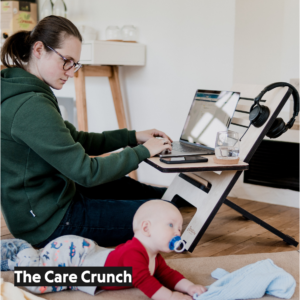
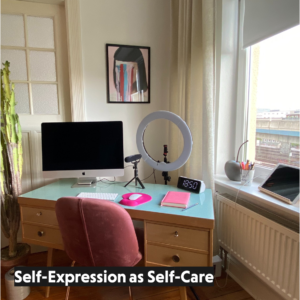
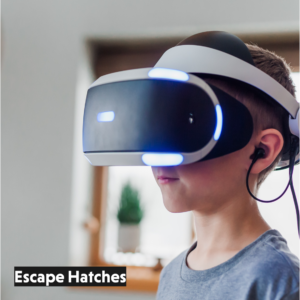
How do we explore trend shifts? By putting the mundane under a microscope
Everyday life can seem tedious, but as researchers who specialise in uncovering design and innovation opportunities, there is no context boring enough to dull our sensors. This bold claim was put to the test over the past year, as most of our project requests focused on understanding how home life under Covid restrictions was likely to impact specific brands, products and services. The intrinsic knowledge of our network gave us a significant head start – each of our local researchers knows the make-up of most households in their country, and how these differ from global norms. However, the challenge was to get the closest look at daily patterns of behaviour, while keeping the safest possible distance. Mobile diaries are a well-worn tool but we also asked our respondents about the layers of their lives, so that they could differentiate and show us their new and old habits. Inspiration for our clients came from new and interesting juxtapositions, for example, dining tables cluttered with place mats, condiments, laundry – and also hand sanitiser, medicine, masks, school books and laptops. New uses of different rooms at home meant new contexts and even new competitors for our clients.
Learn more about our explorations of trend shifts for Tommee Tippee (mobile ethnography) in China in this article.
How could new possibilities INSPIRE you? The best way to find out is to ask us…
The contextual shifts and inherent possibilities that could inspire your future work are out there, already in existence and waiting to be uncovered. Our job is to navigate them, then present you with a balance of fresh perspectives and incisive information for your team of creatives and decision-makers.
 If you’d like to read more about how INSPIRE research can make a difference in your organisation, you can download intO’s INSPIRE guide HERE and take it to your team. Or, if you’d prefer, just shoot me a message at [email protected].
If you’d like to read more about how INSPIRE research can make a difference in your organisation, you can download intO’s INSPIRE guide HERE and take it to your team. Or, if you’d prefer, just shoot me a message at [email protected].
Posted on April 26th, 2021
Strategy Innovation Research

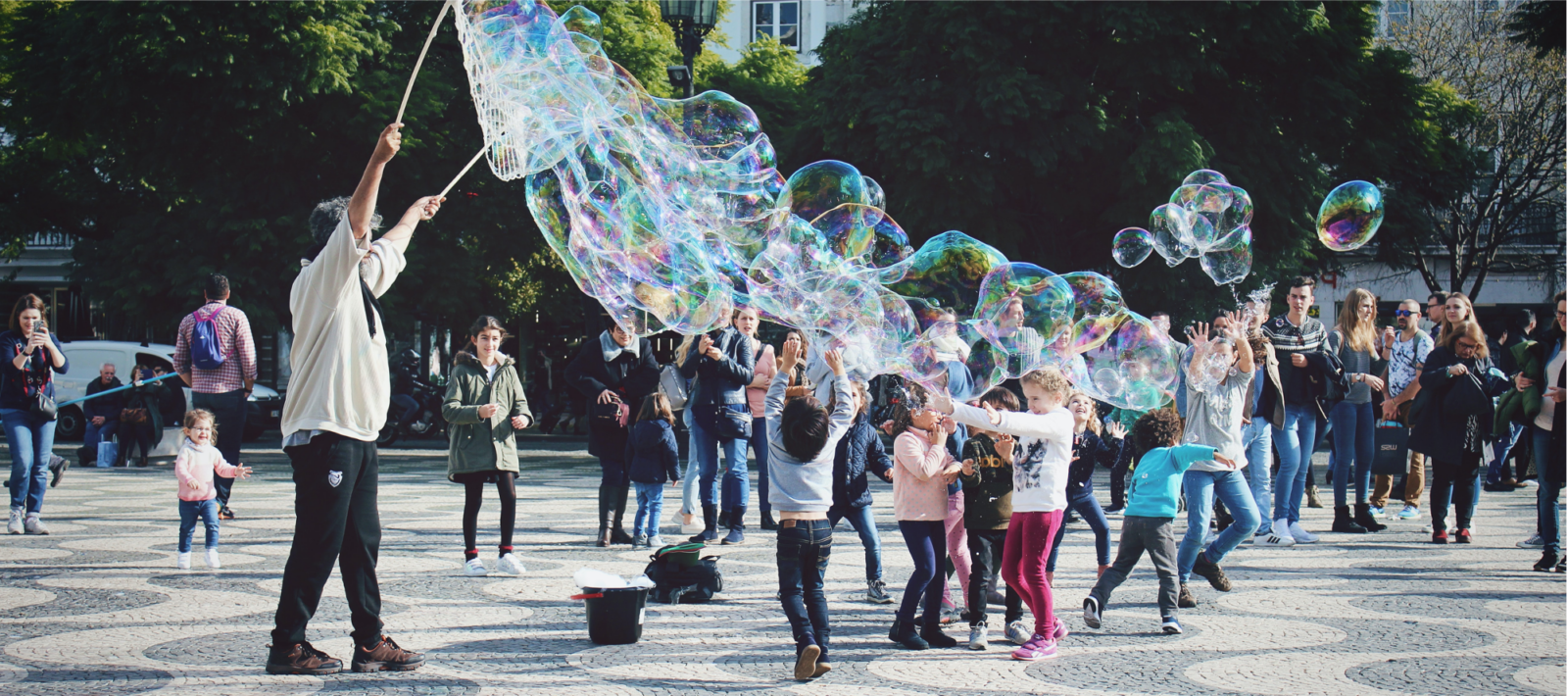










 If you’d like to read more about how INSPIRE research can make a difference in your organisation, you can
If you’d like to read more about how INSPIRE research can make a difference in your organisation, you can 
